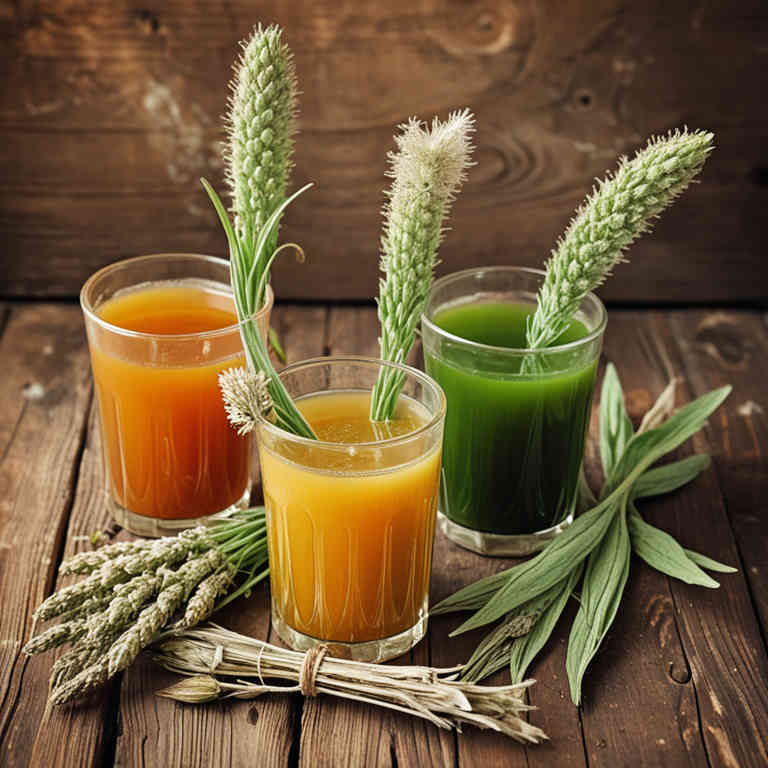Plantago lanceolata juice for medicinal use

Plantago lanceolata juice is a preparation derived from the leaves of the plant commonly known as broadleaf plantain.
It is traditionally used in herbalism for its soothing and healing properties. The juice is often applied topically to treat wounds, insect bites, and skin irritations due to its anti-inflammatory and astringent effects. It may also be consumed internally to support respiratory health and alleviate digestive issues.
This preparation is valued for its ability to promote healing and reduce inflammation in both internal and external applications.
Uses
Plantago lanceolata juice has been used to treat various ailments for centuries, with historical roots in ancient Egypt, Greece, and Rome, where it was valued for its healing properties.
Traditionally, it was used to soothe digestive issues, reduce inflammation, and promote wound healing, often applied topically or ingested as a tonic. In modern herbal medicine, the juice is still valued for its mucilage content, which can help alleviate respiratory conditions like coughs and bronchitis. It is also used today in natural remedies for skin irritations and as a gentle demulcent for sore throats.
Contemporary research continues to explore its potential anti-inflammatory and antioxidant benefits.
Benefits
Plantago lanceolata juice has health benefits such as promoting digestive health, reducing inflammation, and supporting respiratory function.
It contains mucilage, which can soothe irritated tissues in the digestive tract and help alleviate symptoms of conditions like irritable bowel syndrome. The juice is also known to have antimicrobial properties that may help fight infections. It is traditionally used to relieve coughs and congestion due to its expectorant effects.
Additionally, it may contribute to skin health by reducing irritation and promoting healing.
Constituents
Plantago lanceolata juice active constituents include mucilage, polysaccharides, flavonoids, and tannins.
These compounds contribute to its traditional use in soothing inflammation and promoting digestive health. Mucilage forms a protective layer over mucous membranes, aiding in reducing irritation. Polysaccharides may support immune function and gut health.
Flavonoids and tannins provide antioxidant and anti-inflammatory properties, enhancing the juice's therapeutic potential.
Preparation
To make Plantago lanceolata juice, first gather fresh Plantago lanceolata leaves, ensuring they are free from pesticides and contaminants.
Wash the leaves thoroughly under running water to remove any dirt or debris. Next, chop the leaves into small pieces and blend them with a small amount of water until a smooth pulp is formed. Strain the mixture through a fine mesh sieve or cheesecloth to separate the liquid from the pulp.
Finally, press the strained pulp gently to extract as much juice as possible, and store the juice in a clean, airtight container in the refrigerator for up to a week.
Side Effects
Plantago lanceolata juice may lead to gastrointestinal discomfort, including nausea, vomiting, and diarrhea, due to its high concentration of mucilage and active compounds.
It can also cause allergic reactions in individuals sensitive to plants in the Plantaginaceae family. Prolonged use may result in electrolyte imbalances or dehydration, especially if consumed in large quantities. Some studies suggest it may interact with certain medications, particularly those affecting the kidneys or digestive system.
It is important to consult a healthcare professional before using this preparation, especially for individuals with pre-existing medical conditions.